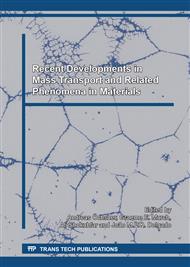p.1
p.8
p.14
p.18
p.25
p.31
p.37
p.44
Analysis of Bone Plate with Different Material in Terms of Stress Distribution
Abstract:
One of the most used in the field of medicine for the treatment of tibial shaft fractures internal fixation methods is by osteosynthesis plates, the most common plate limited contact dynamic compression (DCP-LC) [1]. This paper presents the results of the fracture site grade 1, where the contact plate and the bone callus area on plates made of bone (LVM stainless steel, titanium alloy different biomedical materials and cobalt alloy), in recovery conditions 1% (one week of recovery), 50% (three weeks of recovery), 75% (six weeks of recovery) and 100%. The fractured tibia bone was modeled with an ideal geometry in CAD [2], modeling of commercial DCP-LC plate was obtained by parameterization of the part using a coordinate machine equipment for the exact geometry. The finite element method for the analysis of each case under the same loads and boundary conditions is used, the results were used to determine stress concentrations in the displacement plate and the fracture callus in the load direction, to have a starting point in the optimization of the geometry from a commercial plate minimizing mass while determining that the material has faster and better biocompatibility with the human body recovery. The results obtained show that the plate under the conditions of three different types of biomaterials has a greater stress concentration in the part located in the fracture zone from stage with 1% recovery between the surfaces of the bone callus upper and lower, keeping this a significant effect on the recovery of the fracture. The compression and tension strength that occur in the intact part of the bone and the tibial fracture interface at different stages of osseous healing have been investigated, The results were compared and presented, showing that the stress distribution in the callus to 1% recovery in the stainless steel plate indicate considerable compression in the area of the callus with this causing deterioration in the area fracture because the callus is not strengthened by contact between fractured bone by increasing the recovery time, the results also indicate that the titanium plate is the one with the lower shielding effect [3] according to the distribution of contact stresses according to the recovery period in the part of callus, making it the material of which the best adaptability to the bone is obtained.
Info:
Periodical:
Pages:
18-24
Citation:
Online since:
February 2017
Price:
Сopyright:
© 2016 Trans Tech Publications Ltd. All Rights Reserved
Share:
Citation:


